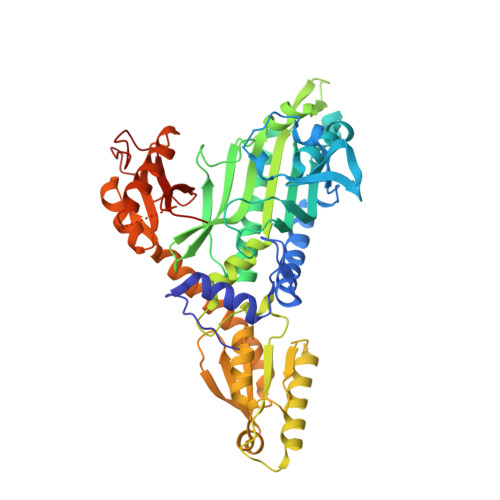Structure of Prolyl-tRNA Synthetase-Halofuginone Complex Provides Basis for Development of Drugs against Malaria and Toxoplasmosis
Jain, V., Yogavel, M., Oshima, Y., Kikuchi, H., Touquet, B., Hakimi, M.A., Sharma, A.(2015) Structure 23: 819-829
- PubMed: 25817387
- DOI: https://doi.org/10.1016/j.str.2015.02.011
- Primary Citation of Related Structures:
4YDQ - PubMed Abstract:
The Chinese herb Dichroa febrifuga has traditionally treated malaria-associated fever. Its active component febrifugine (FF) and derivatives such as halofuginone (HF) are potent anti-malarials. Here, we show that FF-based derivatives arrest parasite growth by direct interaction with and inhibition of the protein translation enzyme prolyl-tRNA synthetase (PRS). Dual administration of inhibitors that target different tRNA synthetases suggests high utility of these drug targets. We reveal the ternary complex structure of PRS-HF and adenosine 5'-(β,γ-imido)triphosphate where the latter facilitates HF integration into the PRS active site. Structural analyses also highlight spaces within the PRS architecture for HF derivatization of its quinazolinone, but not piperidine, moiety. We also show a remarkable ability of HF to kill the related human parasite Toxoplasma gondii, suggesting wider HF efficacy against parasitic PRSs. Hence, our cell-, enzyme-, and structure-based data on FF-based inhibitors strengthen the case for their inclusion in anti-malarial and anti-toxoplasmosis drug development efforts.
Organizational Affiliation:
Structural and Computational Biology Group, International Centre for Genetic Engineering and Biotechnology (ICGEB), Aruna Asaf Ali Road, New Delhi 110067, India.

















